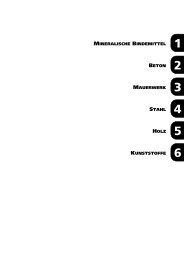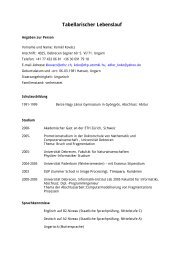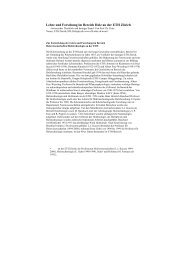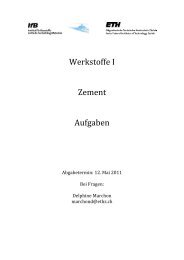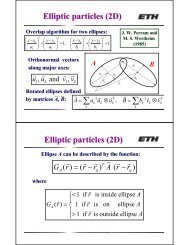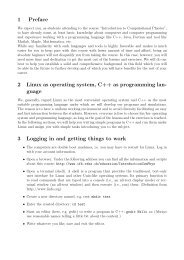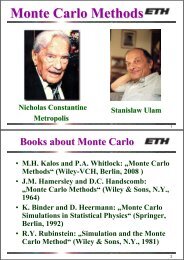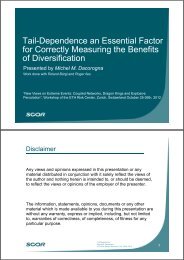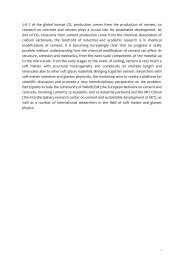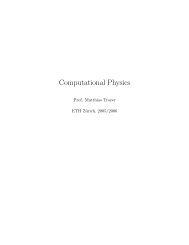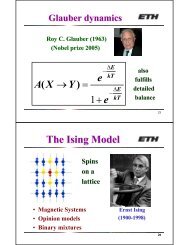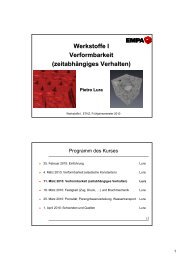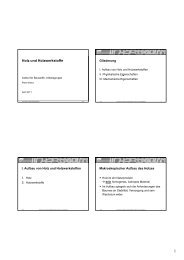Measurement Method for Acoustic Emission Signals in Concrete - IfB
Measurement Method for Acoustic Emission Signals in Concrete - IfB
Measurement Method for Acoustic Emission Signals in Concrete - IfB
You also want an ePaper? Increase the reach of your titles
YUMPU automatically turns print PDFs into web optimized ePapers that Google loves.
4.1 Sensor<br />
AE sensors shall be sensitive enough to detect AE signals generated <strong>in</strong> the target<br />
structure, tak<strong>in</strong>g acoustic coupl<strong>in</strong>g <strong>in</strong>to consideration. They convert elastic waves<br />
(motions) on the surface of a material <strong>in</strong>to electric signals, preferably, without any<br />
distortions. Usually, a resonance-type sensor is most sensitive around the resonant<br />
frequency, while a broad-band sensor has approximately flat response <strong>in</strong> the range but is<br />
less sensitive than the resonance-type. AE sensor shall be robust enough aga<strong>in</strong>st<br />
temperature change, moisture condition and mechanical vibrations <strong>in</strong> the environments.<br />
Sensitivity calibration of AE sensors shall be per<strong>for</strong>med by employ<strong>in</strong>g the standard<br />
source. A simulated AE source due to pencil-lead break is def<strong>in</strong>ed <strong>in</strong> NDIS 2110 and<br />
others. Along with a guide-r<strong>in</strong>g, a standard source is illustrated <strong>in</strong> Fig. 3.<br />
4.2 Amplifier<br />
Fig. 3 Standard AE source.<br />
Amplifiers normally consist of the pre-amplifier and the ma<strong>in</strong> amplifier as shown <strong>in</strong><br />
Fig. 2. The pre-amplifier shall be located as close as possible to AE sensor. The<br />
<strong>in</strong>ternal noise of the amplifier shall be <strong>in</strong>herently low and less than 20 �V as the peak<br />
voltage converted by <strong>in</strong>put voltage. The amplifier shall be robust enough aga<strong>in</strong>st the<br />
environmental conditions and be protected properly.<br />
4.3 Filter<br />
The frequency range shall be determ<strong>in</strong>ed prior to the measurement, tak<strong>in</strong>g <strong>in</strong>to<br />
account the per<strong>for</strong>mance of AE sensors and the amplifiers. Selection of the frequency<br />
rage is closely related to elim<strong>in</strong>ation of noises. In concrete, the use of a band-pass<br />
filter between several kHz and several 100 kHz is recommended.



